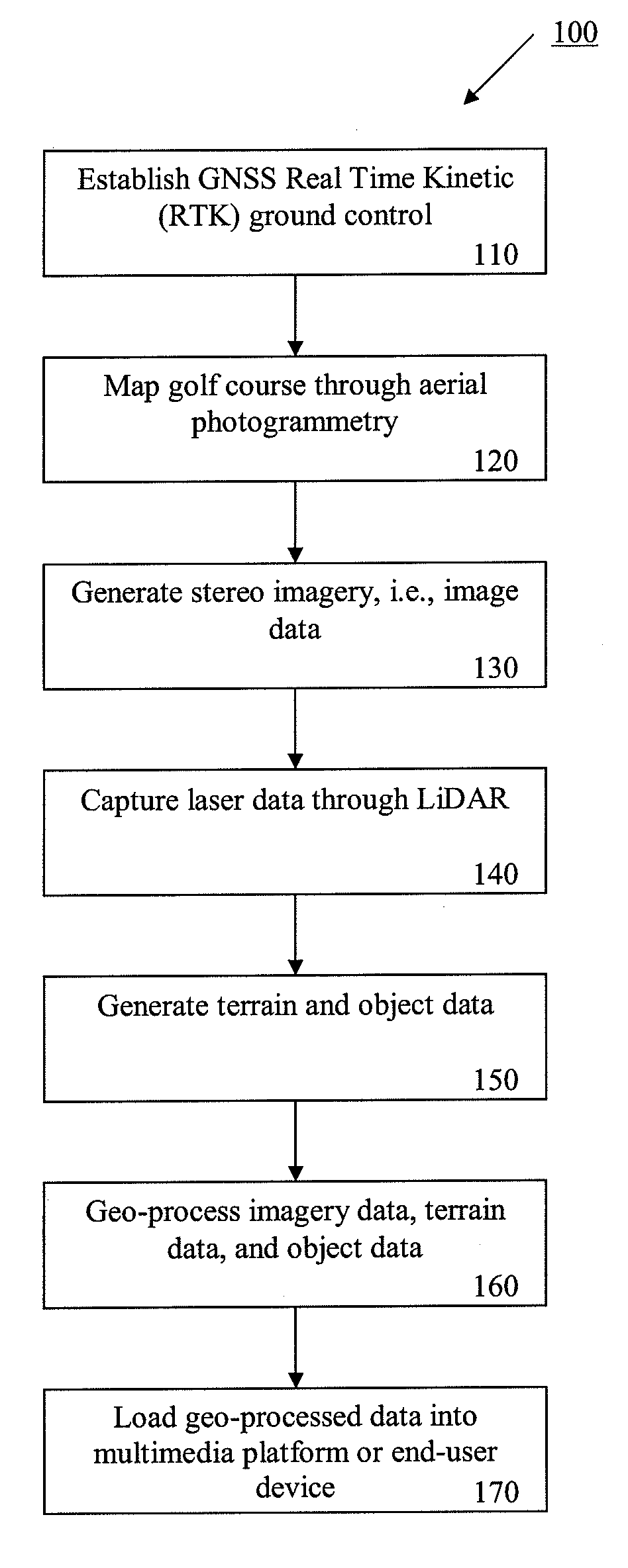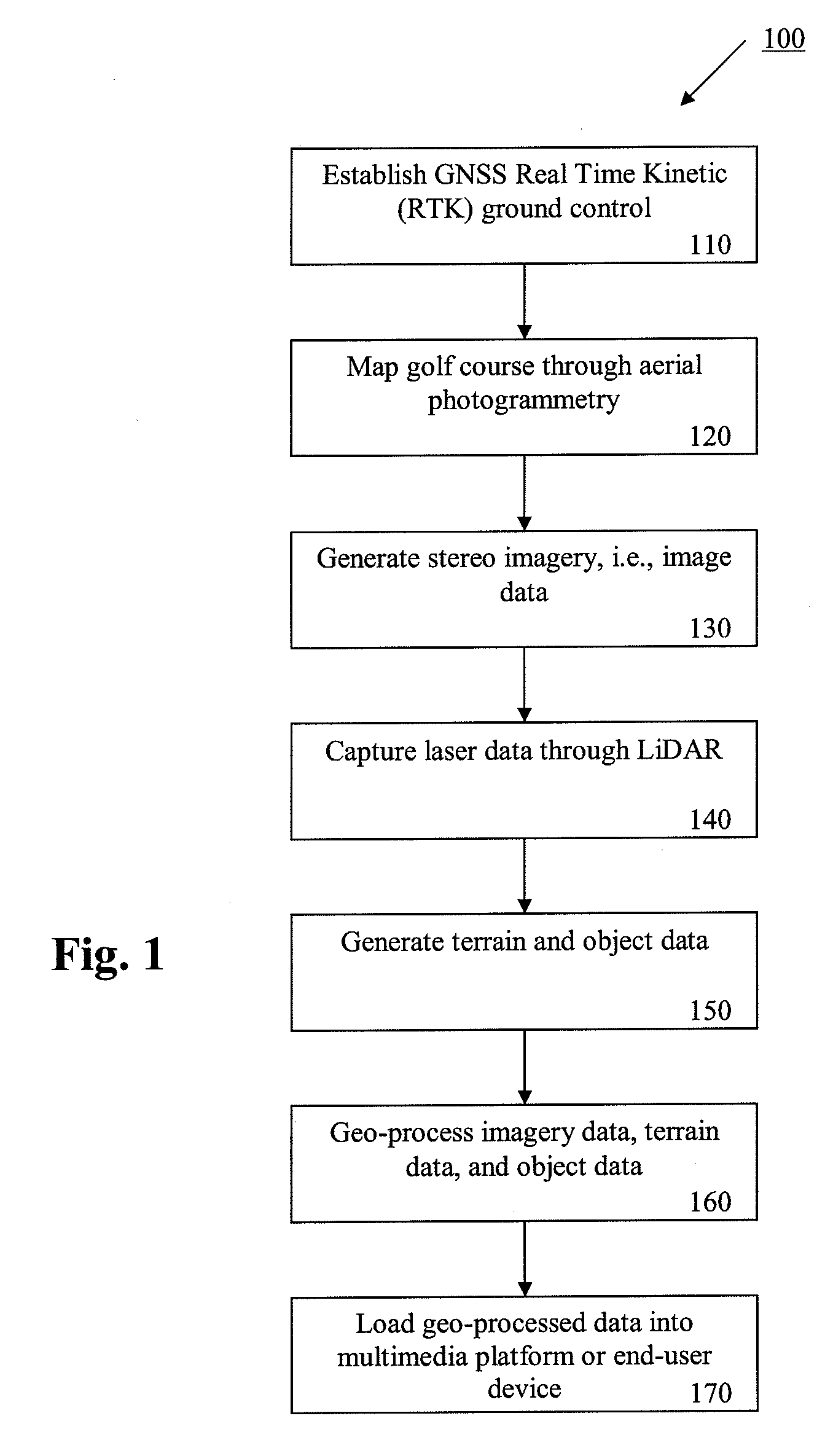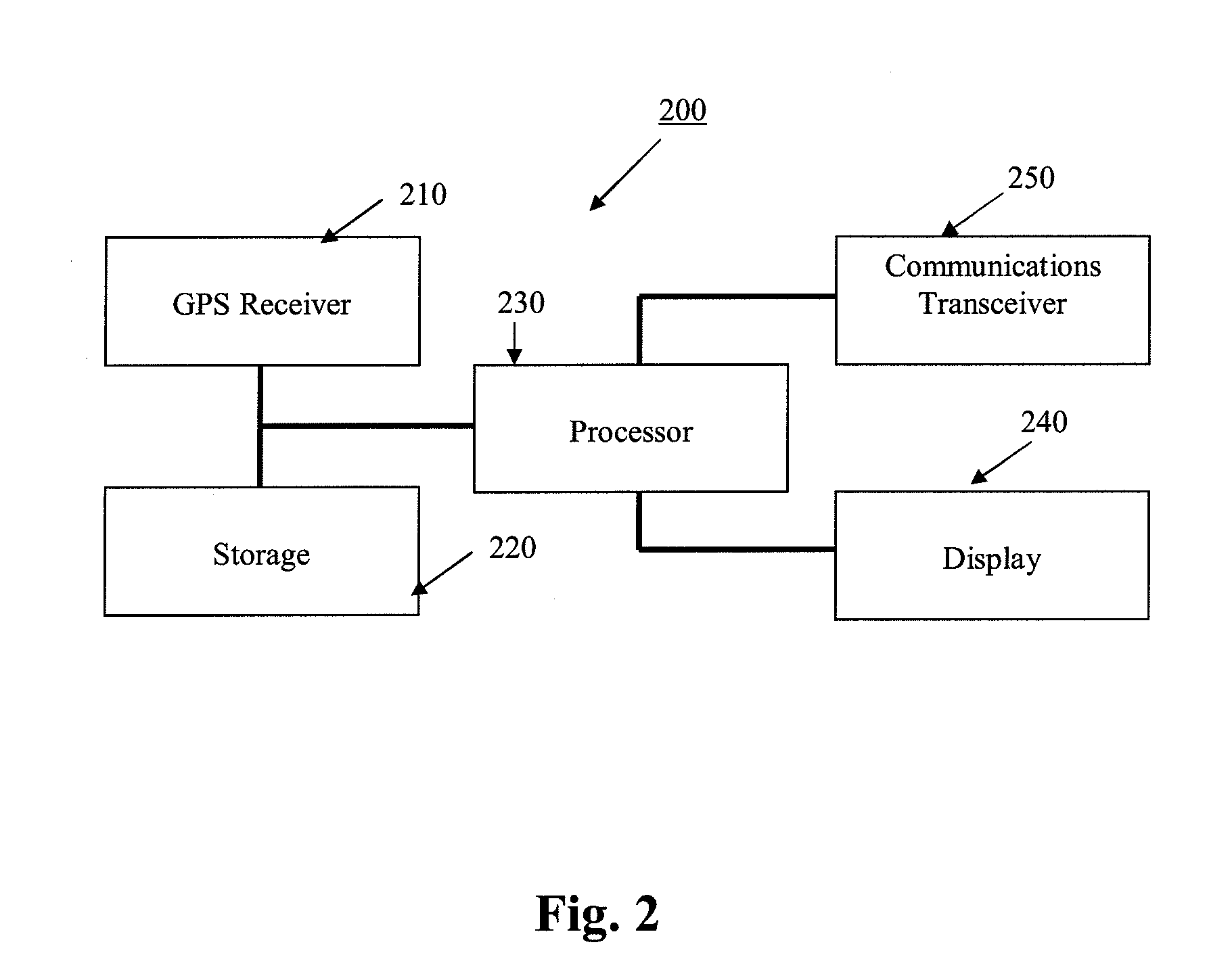3-D golf course navigation device and image acquisition method
a golf course and navigation device technology, applied in the field of golf, can solve the problems of geospatial data used, conventional golf gps devices suffer from a number of drawbacks, and the production of commercial golf gps devices, so as to improve accuracy, improve playability, and improve the effect of informed decision-making on the cours
- Summary
- Abstract
- Description
- Claims
- Application Information
AI Technical Summary
Benefits of technology
Problems solved by technology
Method used
Image
Examples
Embodiment Construction
[0024]Further features and advantages of the invention, as well as the structure and operation of various embodiments of the invention, are described in detail below with reference to the accompanying FIGS. 1-5, wherein like reference numerals refer to like elements. Although the present invention is described in the context of a golf course, the navigation and display technology described herein may be implemented in other geospatial applications such as, but not limited to parks, hiking trails, ski resorts, amusement parks, and race courses.
[0025]The present invention provides a golf course navigation device that implements three-dimensional data and software for accurate distance measurements. In an embodiment of the invention, three data sets are acquired for each golf hole: (1) image data, (2) geospatial terrain data including elevation measurements, and (3) object data pertaining to trees, bushes, water hazards, buildings, and any other objects present (collectively referred t...
PUM
 Login to View More
Login to View More Abstract
Description
Claims
Application Information
 Login to View More
Login to View More - R&D
- Intellectual Property
- Life Sciences
- Materials
- Tech Scout
- Unparalleled Data Quality
- Higher Quality Content
- 60% Fewer Hallucinations
Browse by: Latest US Patents, China's latest patents, Technical Efficacy Thesaurus, Application Domain, Technology Topic, Popular Technical Reports.
© 2025 PatSnap. All rights reserved.Legal|Privacy policy|Modern Slavery Act Transparency Statement|Sitemap|About US| Contact US: help@patsnap.com



